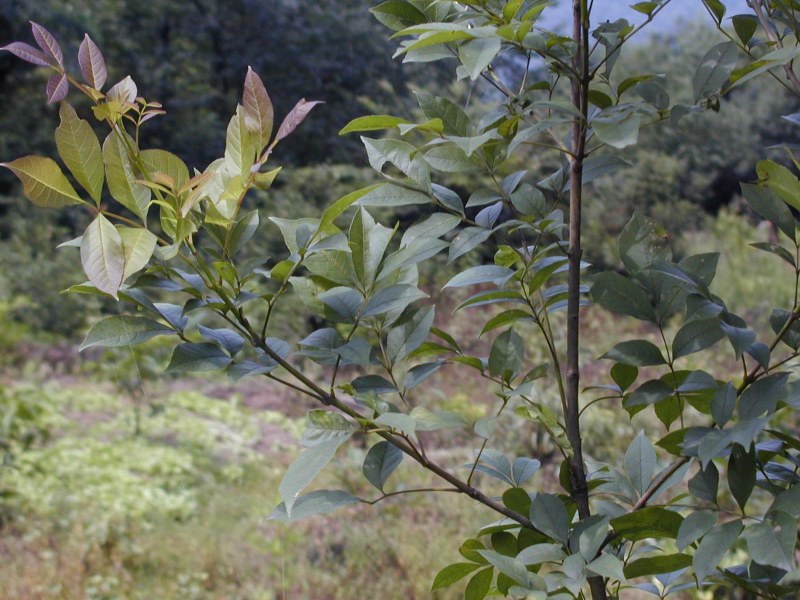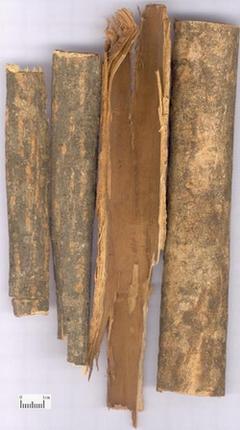Analgesic-especially for pain caused by
muscular rheumatism.[2]
[1] A Complete English Dictionary of Medicinal Terms in Chinese Acupuncture and
Herbalism 1981- Henry Lu Chinese Foundations of Natural Health- The Academy of
Oriental Heritage, Vancouver, Canada.
[2] Translation notes from Gary Seiford and Hocu Huhn- NSW College of Natural
Therapies. Sydney Australia (1982).
[3] Chinese Herbal Medicine Materia Medica- Dan Bensky and Andrew Gamble- Eastland
Press 1986 Seattle Washington ISBN 0-939616-15-7
Images
1.
tcm100.com
2.
old.tcmwiki.com
Aesculin, aesculetin.[1]
References
[1] Chinese Herbal Medicine Materia Medica- Dan Bensky and Andrew Gamble- Eastland
Press 1986 Seattle Washington ISBN 0-939616-15-7
 Fraxinus
rhynchophylla, Fraxinus
chinensis var rhynchophylla. Juglans mandshurica 秦
皮 Qín pí-
"Qin dynasty bark" Korean
Ash Family:
Oleaceae
Fraxinus
rhynchophylla, Fraxinus
chinensis var rhynchophylla. Juglans mandshurica 秦
皮 Qín pí-
"Qin dynasty bark" Korean
Ash Family:
Oleaceae
